An American Jew’s take on the “eternally undivided capital.”
I’ll never forget the man with the wooden rake. It was mid-afternoon on a Friday in the Jerusalem neighborhood of Sheikh Jarrah. A group of Israeli activists had gathered, along with local Palestinian residents, to protest the ongoing settlement activity and housing evictions in the area. As an American Jewish college student, I was spending the summer in Israel to conduct research for my senior thesis on joint Israeli-Palestinian nonviolent activism. Attending this small protest was a part of my fieldwork.
An Odd House
The Israeli and Palestinian protesters had congregated in front of a particular house. It was an odd one. The wall of the courtyard was painted with contradictory graffiti in Hebrew, Arabic and English. In one color, it read “Free Palestine.” In another color, the line continued, “… of leftist scum.” But stranger than these eerie messages were the residents of the house.
In 2008, a group of Israeli settlers had arrived in the neighborhood claiming the house belonged to them. After a series of court proceedings, the Palestinian al-Kurd family lost half of the house. As a result,, the family was violently evicted by both settlers and police, and forced to move into the back wing — meaning radical Israeli settlers, intent on Judaizing East Jerusalem, and a local Palestinian family would be sharing the same house.
The Israeli and Palestinian protesters stood in front of the house, chanting and demanding that the settlers leave. Suddenly, a large man wearing a kippah and tzizit (traditional Jewish garb) marched out of the house, holding a wooden rake. He spotted one of the young Israeli women on the lawn and chased her, attempting to smack her with his makeshift weapon. This young woman, who also happened to be one of my interview subjects, ran with agility as the other Israeli activists dispersed. The Palestinian residents of the neighborhood had already whipped out their cellphones and were snapping pictures of the surprise attack. The young Palestinian children who had been contentedly beating drums and chanting along with the protesters ran in a confused gaggle, trying to keep a safe distance away while still being able to see the action. Once the demonstrators dispersed, the man shouted, “Go to hell!” and walked back into his half-house.
Intending to make Jerusalem the eternally undivided capital of the State of Israel, the Israeli government redrew the boundaries of the city and extended its jurisdiction over the new municipal area. This amounted to de facto annexation, expanding East Jerusalem to ten-times its pre-war size and incorporating 28 Palestinian neighborhoods, along with two Palestinian refugee camps.
My immediate instinct was to make sure the children were alright. While none of them could have been above the age of ten, I also noted that none were crying. When I approached a group of children and asked in Arabic if they were okay, they brushed me off and insisted they were fine. This is when a million thoughts began to rush through my head. In what world do children not cry when they see a large man chasing a young woman with a wooden rake? And how must these Palestinian children perceive observant Jews if this is their only exposure to kippah and tzizit? And how can this violence be happening in Jerusalem, the same holy city that thousands of Jews visit as tourists every year? This was Jerusalem, for goodness sake, not some radical settler outpost in the West Bank.
So I began a long process of learning, and coming to terms with, the everydayness of occupation in East Jerusalem.
Settlements in Jerusalem
Following the Six Day War in 1967, Israel came into control of the West Bank, Gaza, East Jerusalem, the Sinai Peninsula and the Golan Heights. While the fates of each of these areas developed differently, most relevant for our purposes is what unfolded in Jerusalem. Intending to make Jerusalem the eternally undivided capital of the State of Israel, the Israeli government redrew the boundaries of the city and extended its jurisdiction over the new municipal area. This amounted to de facto annexation, expanding East Jerusalem to ten-times its pre-war size and incorporating 28 Palestinian neighborhoods, along with two Palestinian refugee camps.
In November 1967, the United Nations passed Security Council Resolution 242, demanding that Israel withdraw from the newly occupied territories, including Jerusalem. To this day, the international community still does not recognize the unilateral Israeli annexation of East Jerusalem. Even the United States, arguably Israel’s strongest ally in the world, maintains its embassy in Tel Aviv, not Jerusalem.
While Israel annexed the land of East Jerusalem, it did not annex the people. Palestinians living there received the status of “permanent residence,” not citizenship. Meaning:
1) They could vote only in local, not national elections
2) They could not hold certain local offices, notably that of mayor
3) They could not hold an Israeli passport
4) Their “permanent” status could be revoked, if they left the city for a certain period of time
So began the myth of the “eternally united capital,” in which all of its Palestinian residents lived on a conditional status, while its Jewish residents lived as citizens.
Immediately following the Six Day War, Israel began to build settlements in East Jerusalem and encouraged Jewish Israelis to move there. The goal was to maintain a Jewish demographic majority in the city, out of fear that Palestinians would one day attempt to realize their own national aspirations in Jerusalem. At the time, David Ben-Gurion, Israel’s first prime minister, said: “We must bring Jews to eastern Jerusalem at any cost. We must settle tens of thousands of Jews in a brief time. Jews will agree to settle in eastern Jerusalem even in shacks. We cannot await the construction of orderly neighborhoods. The essential thing is that Jews will be there.”
In many cases, settlements in East Jerusalem mean the migration of radical, ultra-nationalist settlers into the hearts of Palestinian neighborhoods. When settlers move there, they are accompanied by private guards who set up security cameras and harass the local Palestinian residents.
Since 1967, upward of 15 settlements have been built in East Jerusalem with a current population of about 200,000 Israelis. Since the mid-1980s, settlements have begun to develop in the heart of Palestinian neighborhoods, including the Old City of Jerusalem, Sheikh Jarrah, Silwan, Ras al-Amud, Jabel Mukaber and A-Tur. This latter type of settlements is generally created by private settler organizations, with the institutional support of every level of the Israeli government. Unlike older and more established settlements in East Jerusalem, these are populated by ideologically motivated, ultra-nationalistic Jewish groups, with the express purpose of imposing a singular Jewish narrative over the entirety of East Jerusalem.
It is absolutely crucial to understand the demographic logic of settlement activity in East Jerusalem. While one could argue that Israel’s endgame for the West Bank and Gaza are up for debate, the Israeli government has been very clear about its intentions for East Jerusalem. In 1980, the State of Israel passed the “Jerusalem Law,” declaring Jerusalem the “complete and united” capital of Israel.
In order to maintain a Jewish majority in the “eternally united capital,” Israel has adopted measures to both increase the Israeli Jewish population in the city, while simultaneously making life very difficult for its Palestinian residents. In this way, settlements in Jerusalem are not only a geopolitical area of interest, potentially impacting future borders and peace treaties, but also a system of oppression that is designed to make Palestinians feel unwelcome in their own city.
The Everydayness of Occupation
After graduating from the University of Pennsylvania in 2013, I returned to Israel as a New Israel Fund-Shatil Social Justice Fellow. With the choice of working at virtually any social justice-oriented Israeli nonprofit, I decided to spend my year working for Ir Amim, an Israeli organization that focuses on Jerusalem in the context of the Israeli-Palestinian conflict.
Ir Amim seeks to render Jerusalem a more equitable city for the Israelis and Palestinians who share it, as well as to secure a more politically sustainable future for the city through a negotiated process between Israel and the Palestinians. I chose Ir Amim because I wanted to develop a deeper understanding of settlements and occupation in Jerusalem. I wanted to learn from the Palestinian residents of the city themselves how the occupation affects their lives. I specifically wanted to hear from Palestinian women, who are often doubly oppressed. So I developed my ongoing project at Ir Amim on the impact of Israeli policies on Palestinian women and girls in East Jerusalem. I will share here two examples of what I have learned, specifically regarding settlements.
Settlers in the Heart of Palestinian Neighborhoods
In many cases, settlements in East Jerusalem mean the migration of radical, ultra-nationalist settlers into the hearts of Palestinian neighborhoods. When settlers move there, they are accompanied by private guards who set up security cameras and harass the local Palestinian residents. The entire neighborhood comes under a close system of surveillance that is primarily directed at the behaviors of the Palestinian residents. There has been at least one case of a private settler security guard in East Jerusalem shooting and killing a Palestinian resident.
Settler violence is not uncommon. I remember interviewing one woman who lives in the Muslim Quarter of the Old City. She told me that when her son was just a toddler, a Jewish man living in the area walked by and slapped him so hard that he fell to the ground. Her son had to be treated at a hospital. When she filed a police complaint, she was told that nothing could be done. This, despite the fact that surveillance cameras have been set up over the entire Old City of Jerusalem, due to the large settler population living there. This woman told the story with a smile, explaining that her son is fine now but still “hides behind me when he sees Jews.”
Housing Evictions
Another obvious impact of settlements are the housing evictions that often accompany them. Without descending into the convoluted legal mechanisms at play, radical ultra-nationalist settler groups often use the Absentee Property Law and/or claim that Palestinians are living on land that was owned by Jews before 1948. The Israeli court system has ruled in favor of settlers time and again, resulting in numerous Palestinian housing evictions.
What stuns me most about the injustices and tragedies I encountered in this city is not the fact that they exist (although, they are stunning). What stuns me most is our capacity, as American Jews, to ignore the Palestinian residents of Jerusalem.
Housing evictions can be socially, economically and psychologically devastating. In the lead-up to evictions, family members worry about where they will go if evicted. Often, they struggle under the weight of enormous legal fees to try to keep the house, usually to no avail. Evictions are usually carried out violently, including the destruction of property and physical injury. In the aftermath, families often move in with relatives, resulting in overcrowding and difficult living conditions. Palestinian families often face economic hardship, still working to pay off legal fees while hoping to buy or build another house.
Evictions impact women differently than men. Often, evicted families move in with the husband’s parents, robbing women of their privacy and autonomy in the house. Within traditional Palestinian society, women often cover their heads in front of men who are not immediate family members. Moving in with an extended family means that many women are forced to keep their heads covered, even within the house. This is the intimate face of the settlement enterprise.
An American Jew in Jerusalem
What stuns me most about the injustices and tragedies I encountered in this city is not the fact that they exist (although, they are stunning). What stuns me most is our capacity, as American Jews, to ignore the Palestinian residents of Jerusalem. In fact, it was not until my fourth time in Jerusalem that I noticed its Palestinian residents at all (outside of taxi drivers and restaurant waiters). And it was not until this year that I felt so aware of their reality that I began to see the occupation in every crevice of the city’s seemingly quiet landscape. But in general, Jerusalem still remains the most uncontroversial aspect of the Israeli-Palestinian conflict in the American Jewish discourse today. Of course, it’s our eternally undivided capital. Of course.
Do we understand that when we visit the City of David National Park in Silwan by the thousand every year, we buy our tickets from a radical settler organization committed to imposing a singular Jewish narrative over all of East Jerusalem? Do we recognize that a “National Park” was forcibly established in the Palestinian neighborhood of Silwan, contributing to the widespread displacement of Palestinian residents and the ongoing disruption of their daily lives? It is important to note that settlements are generally not small shacks in the wilderness, or even necessarily residential communities. Many of the “National Parks” established in Jerusalem can be understood as settlements as well, built for the same purpose as any other settlement.
Do we understand that when we visit Ben Yehuda Street for a night of fun, ice-cream and live music, radical settlers are simultaneously buying and taking over a building on Salah ad-Din Street, the Palestinian commercial center of East Jerusalem? Do we realize that the coffee shops and clothing boutiques on Salah ad-Din will soon be patrolled by private settler guards as well?
Do we understand that when we make Aliyah to Israel and move to Jerusalem under the Law of Return, we have more rights as a newly arrived immigrant to the country than a Palestinian permanent resident who has lived in Jerusalem for his or her entire life? I remember one Palestinian woman’s account of hearing settlers outside of her house in Wadi Joz speaking in English. She cried indoors, intimidated as a pregnant woman to go outside and walk past them. I wondered if I may have known those settlers, directly or indirectly.
Earlier this year, I attended a conference run by the Israeli-Palestinian Peace NGO Forum. A female Palestinian resident of East Jerusalem spoke on a panel and stunned the audience with her candor. “Maybe we should just admit defeat!” she half cried. Her words did not quite hit me until I had made my way from the conference hall in East Jerusalem to the bustling center of town in West Jerusalem. I was suddenly surrounded by American Jews, all speaking in English, taking photos, and laughing with one another. As I watched my peers enjoying the onset of evening, I began to cry.
What have we become?
The views expressed in this article are the author’s own and do not necessarily reflect Fair Observer’s editorial policy.
Support Fair Observer
We rely on your support for our independence, diversity and quality.
For more than 10 years, Fair Observer has been free, fair and independent. No billionaire owns us, no advertisers control us. We are a reader-supported nonprofit. Unlike many other publications, we keep our content free for readers regardless of where they live or whether they can afford to pay. We have no paywalls and no ads.
In the post-truth era of fake news, echo chambers and filter bubbles, we publish a plurality of perspectives from around the world. Anyone can publish with us, but everyone goes through a rigorous editorial process. So, you get fact-checked, well-reasoned content instead of noise.
We publish 3,000+ voices from 90+ countries. We also conduct education and training programs
on subjects ranging from digital media and journalism to writing and critical thinking. This
doesn’t come cheap. Servers, editors, trainers and web developers cost
money.
Please consider supporting us on a regular basis as a recurring donor or a
sustaining member.
Will you support FO’s journalism?
We rely on your support for our independence, diversity and quality.



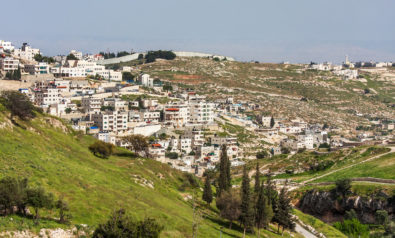

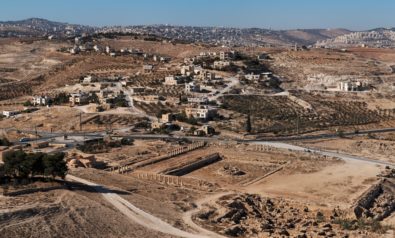
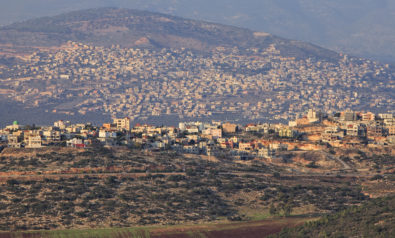
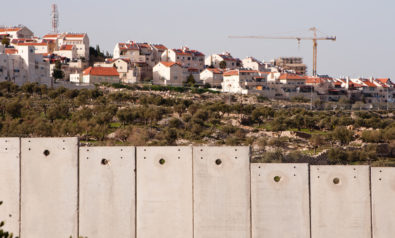
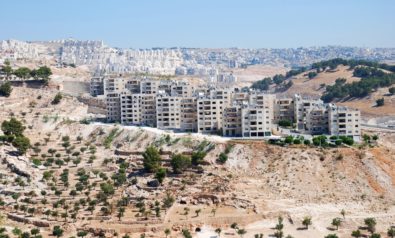


Comment